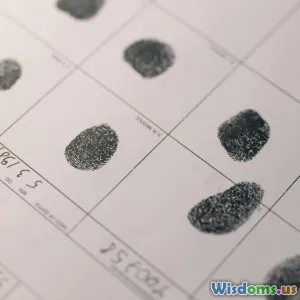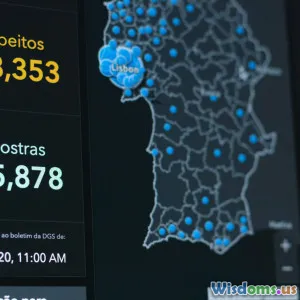
The Future of Forensic Technologies
6 min read Explore the evolving landscape of forensic technologies and their impact on crime investigation and criminology. (0 Reviews)
The Future of Forensic Technologies
Introduction
In recent years, the field of forensic science has witnessed groundbreaking advancements, driven by technology and innovation. From DNA analysis to digital forensics, these tools have dramatically reshaped the landscape of crime investigation and criminology. As we look to the future, several emerging forensic technologies promise to enhance our ability to solve crimes, ensure justice, and protect society. This article explores these innovations, their implications, and the future directions they might take.
1. The Role of Artificial Intelligence in Forensics
Artificial Intelligence (AI) is at the forefront of technological advancements in forensic sciences. Machine learning algorithms can analyze vast amounts of data, identifying patterns and correlations that might elude human analysts. For example, AI can enhance facial recognition technologies, improving suspect identification in surveillance footage. Moreover, AI-driven predictive analytics can help law enforcement agencies anticipate criminal activity by analyzing historical crime data and social dynamics.
Example: AI in DNA Analysis
AI's application in DNA analysis is particularly promising. Traditional methods of DNA matching can be time-consuming and error-prone. However, AI can streamline this process, increasing the accuracy of matches and reducing turnaround times in forensic labs.
2. Advancements in DNA Technology
DNA technology continues to evolve, with new techniques emerging that promise to refine how we utilize genetic material in investigations. Next-generation sequencing (NGS) allows forensic scientists to analyze complex DNA samples that were previously difficult to interpret.
Example: Rapid DNA Testing
Rapid DNA testing is another significant development. This technology enables law enforcement to obtain DNA profiles from individuals in a matter of hours rather than days or weeks. Such rapid analysis is crucial during critical moments in investigations, allowing for quicker suspect identification and resolution of cases.
3. The Rise of Digital Forensics
The digital age has ushered in new challenges in crime investigation, necessitating the rise of digital forensics. Investigators now face the task of analyzing data from a myriad of devices, including smartphones, computers, and cloud storage. Digital forensic tools are designed to recover, analyze, and present electronic data in a legally admissible format.
Example: Mobile Forensics
Mobile forensics tools can extract information from mobile devices even when passwords are unknown. This capability can unlock crucial evidence in various crimes, including cybercrime, fraud, and even violent offenses.
4. 3D Crime Scene Reconstruction
3D crime scene reconstruction technology is revolutionizing how crime scenes are documented and analyzed. By creating accurate 3D models of crime scenes, investigators can visualize and simulate different scenarios, ultimately aiding in understanding the sequence of events.
Example: Virtual Reality in Investigations
The integration of virtual reality (VR) with 3D reconstruction allows juries and law enforcement to walk through crime scenes digitally, providing an immersive experience that can enhance their comprehension of the case.
5. Biometric Innovations
Biometrics, including fingerprint analysis, voice recognition, and iris scanning, are becoming increasingly sophisticated. Technologies such as live fingerprint scanning and multi-modal biometrics (combining various biometric indicators) improve the accuracy of identification processes.
Example: Voice Recognition
Voice recognition technology is particularly relevant in cases involving audio recordings, allowing investigators to analyze speaker characteristics and match them with known individuals.
Conclusion
The future of forensic technologies is bright and full of potential. As innovations continue to emerge, they will undoubtedly enhance the capabilities of law enforcement and forensic scientists. However, alongside these advancements come ethical considerations and the need for stringent regulations to ensure that these technologies are used responsibly. As we embrace these tools, the ultimate goal remains clear: to enhance our ability to solve crimes and deliver justice effectively and fairly.
Through the integration of AI, advancements in DNA technology, digital forensics, 3D reconstruction, and biometric innovations, the future of crime investigation is not only about solving crimes but also about doing so with precision, efficiency, and integrity.
Rate the Post
User Reviews
Popular Posts




















